Description
Buy PREVACID FDT 30MG TABLET at Rose Pharmacy Online Drugstore
Description :
Prevacid was developed from the research on (+)-2-[[(2-pyridyl)methyl]sulfinyl] benzimidazole derivatives having fluorinated side chain in the Research Laboratories of Takeda Chemical Industries, Ltd
Indications / Uses :
Prevacid FDT: Duodenal ulcer, gastric ulcer, stomal ulcer, Helicobacter pylori-associated peptic ulcer, reflux esophagitis, pediatric gastroesophageal reflux disease (GERD), Zollinger-Ellison syndrome, nonsteroidal anti-inflammatory drug (NSAID)-induced/associated gastric ulcers.
Prevacid IV: Gastric ulcer, duodenal ulcer, acute stress ulcer and acute gastric mucosal lesion accompanied by bleeding in patients who are unable to take oral formulations.
Administration :
Should be taken on an empty stomach: Take before meals. Do not chew/crush.
Contraindications :
Patients with a history of hypersensitivity to any of the ingredients of Prevacid FDT/Prevacid IV.
Patients who are receiving atazanavir sulfate (see Interactions).
Use in lactation: It is advisable to avoid administration of lansoprazole to nursing mothers. However, when the administration is indispensable, nursing should be discontinued.
It has been reported in animal studies (oral dose in rats) that lansoprazole is transferred to mother’s milk.
Special Precautions :
Careful Administration: Prevacid FDT/Prevacid IV should be administered with care in patients with history of hypersensitivity, elderly patients (see Use in the elderly) and patients with hepatic disorders with which a delay in the metabolism and excretion of lansoprazole may occur.
It has been reported that visual disturbance occurred with the use of similar drugs (omeprazole).
Administration of lansoprazole may mask the symptoms of gastric cancer. It is therefore necessary to ascertain that the ulcer is not of a malignant nature before initiating the administration of Prevacid FDT/Prevacid IV.
In several observational studies in overseas, an increased risk of osteoporosis-related fractures of the hip, wrist or spine under the treatment with proton-pump inhibitors has been reported. The risk of fracture was especially increased in patients receiving high dose or long-term (a year or longer) treatment.
Prevacid FDT: Important Precautions: At the treatment, the course of the disease should be closely observed and the minimum therapeutic necessity should be used according to the disease condition.
For the treatment of gastric, duodenal and stomal ulcer, it is advisable not to use this drug for maintenance therapy because there has not been enough experience in long term use.
In the maintenance of healing reflux esophagitis, lansoprazole can be administered only to the patients who repeat recurrence and recrudescence of the condition. Administration to the patients who do not necessitate maintenance of healing should be avoided. When the healing is maintained over a long period by once-daily administration of 30 or 15 mg and when there is no risk of recurrence resulting from dose reduction or discontinuation of administration, the dose should be reduced to a daily dose of 15 mg or administration should be discontinued. Careful observation by means eg, periodic endoscopy is recommended during the maintenance of healing.
In the treatment of non-erosive GERD, effect of lansoprazole should be checked about 2 weeks after the start of this drug. If no improvement is observed in the symptoms, causes other than acid reflux are conceivable. Therefore, such consideration as the change to more appropriate treatment should be made.
In the treatment of non-erosive GERD, lansoprazole should be administered after repeats (=2 days in a week) of acid reflux symptoms such as heartburn and acid belching are confirmed on inquiry.
The administration of Prevacid FDT may mask the symptoms of a malignant tumor eg, gastric/esophageal cancer or of other GI disorders. It is therefore necessary to ascertain that no such diseases are present.
When lansoprazole is used for Helicobacter pylori eradication, precautions eg, contraindications, careful administration and clinically significant adverse reactions listed in the package inserts of the other drugs in the eradication should be rechecked without fail.
Precautions for Indication: Prevention of Recurrence of Gastric or Duodenal Ulcer During NSAIDs Administration: Lasoprazole should be administered to the patients who are under continuous administration of NSAIDs for the purpose eg, pain management of rheumatoid arthritis or osteoarthritis, etc. History of gastric or duodenal ulcer should be confirmed before starting administration.
Adjunct to Helicobacter pylori Eradication: The efficacy of Helicobacter pylori eradication in the advance stage of gastric MALT lymphoma has not been established.
When risk of serious bleeding is predicted in the idiopathic thrombocytopenic purpura patients, other appropriate treatment should be considered.
The efficacy on the prevention of gastric cancer by Helicobacter pylori eradication has not been established other than the stomach after endoscopic resection of early stage gastric cancer.
Prevacid IV: As Prevacid IV was shown to have high hemostatic effect based on the data up to 3 days after starting treatment, once the patient is able to take medications orally, therapy should be switched to an oral formulation and Prevacid IV should not be administered for a long period.
There is no clinical experience of treatment >7 days in Japanese clinical trials.
Important Precautions: During the treatment, the course of the disease should be closely observed and the minimum therapeutic necessity should be used according to the disease condition. If Prevacid IV is ineffective, it should be switched to another treatment.
If the patient has projectile or oozing bleeding, or is considered at risk for rapid bleeding eg, the case of presence of exposed blood vessels, the patient should undergo endoscopic hemostasis eg, heater probe or clipping.
Use in Pregnancy: Prevacid FDT/Prevacid IV should be used in pregnant women or women having possibilities of being pregnant only if the expected therapeutic benefit is thought to outweigh any possible risk.
In animal studies (oral dose in rats) higher plasma concentration of lansoprazole in the fetus than in the mother animal was observed. In pregnant rabbits (30 mg/kg/day oral doses), an increased fetus death rate was observed.
Use in Children: Prevacid FDT: The safety and effectiveness of Prevacid FDT have been established in pediatric patients 1-17 years for short-term treatment of symptomatic GERD and erosive esophagitis. Use of Prevacid FDT in this population is supported by evidence from adequate and well-controlled studies of Prevacid FDT in adults with additional clinical, pharmacokinetic and pharmacodynamic studies performed in pediatric patients. The adverse events profile in pediatric patients is similar to that of adults. Safety and effectiveness has not been established in patients <1 year.
Prevacid IV: The safety of Prevacid IV in children has not been established.
Use in Elderly: Since gastric acid secretion and physiological functions generally decreased in elderly patients, Prevacid FDT/Prevacid IV should be carefully administered, by starting with low dose.
Caution for Usage
Prevacid IV should be used only by IV route.
Prevacid IV should be used immediately after dissolution and the dissoved solution should not be stored since the solution may deteriorate over time.
A dedicated infusion line should be used for the administration of Prevacid IV. The infusion line should not be shared with other drugs. If it is inevitable to administer Prevacid IV using the infusion line for other drugs via a Y-site, the infusion of other drugs should be stopped and the line should be flushed by 0.9% NaCl or 5% dextrose in water before and after administration of Prevacid IV

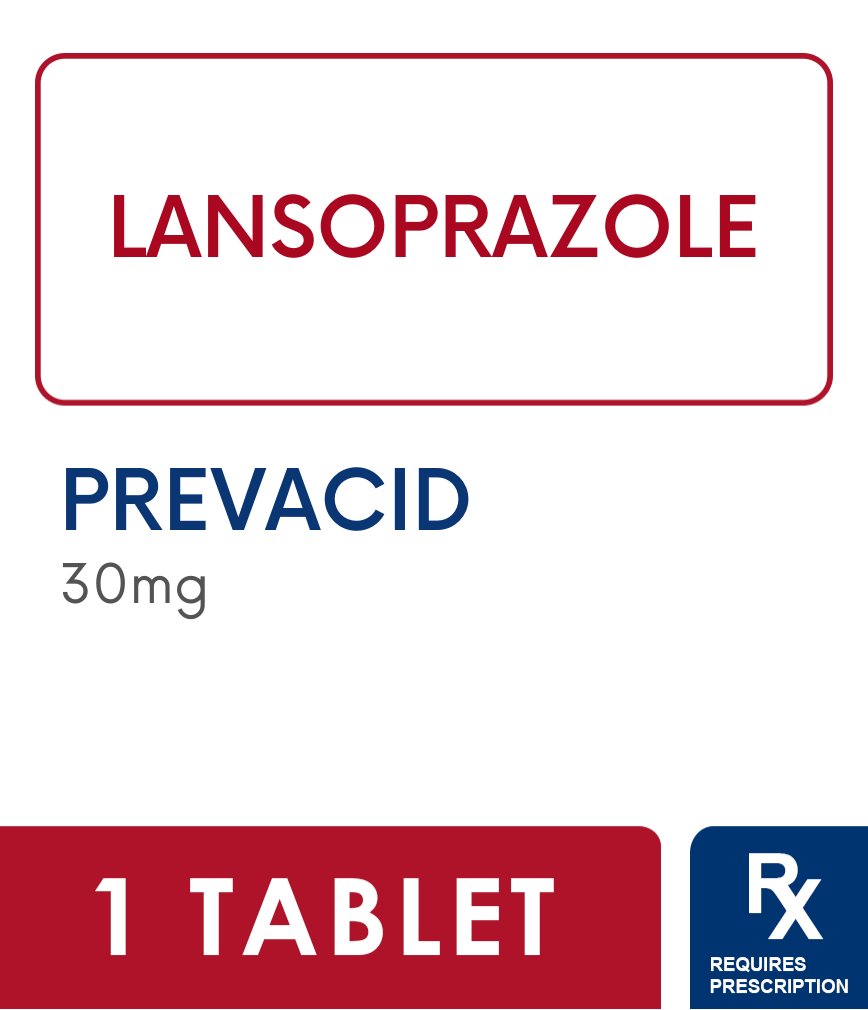
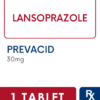
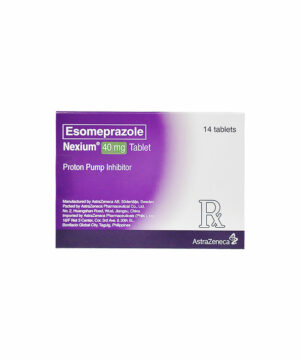

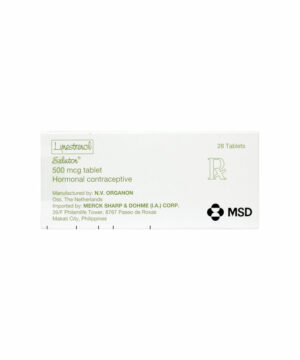




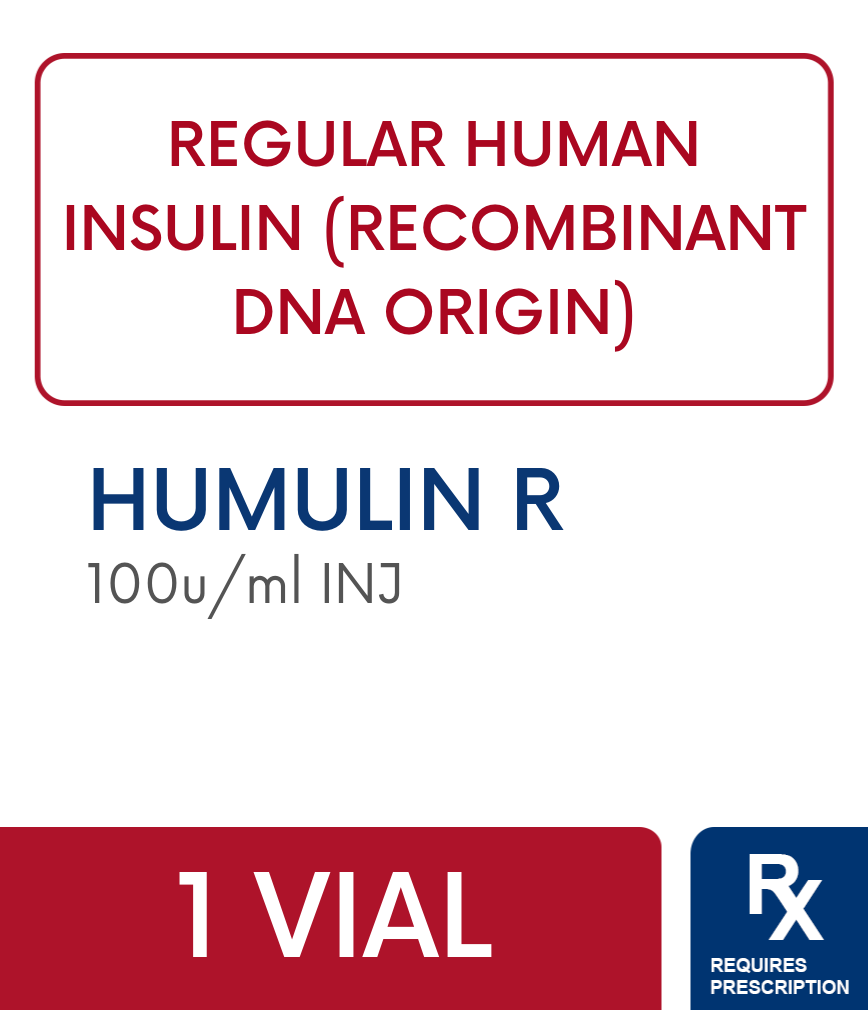



Reviews
There are no reviews yet.